The long-term success of a training program depends on progressing through multiple phases of training that target different, complimentary fitness goals that cycle over periods of time. Most large fitness goals cannot be achieved without multiple types of training.
However, this training must be planned and coordinated properly to successfully drive adaptations and avoid injuries. This long-term planning is called periodization and is a key knowledge requirement for successful fitness professionals.
Introduction to Periodization
Periodization is defined as the systematic manipulation of training variables in order to maximize training adaptations. This includes changes in exercise selection, loading schemes, sets, reps, and even exercise order.
Traditionally, periodization has been the domain of strength and conditioning professionals focusing on athletes, who have a defined “pre”, “mid”, and “off season.” However, the same principles of progression and periodization used to improve athletic performance apply to the general population as well.
Failure to properly periodize a client’s program leads to a stagnation of training adaptations at best and injury at worst. All training programs must balance the stimulus for adaptation with the level of fatigue acquired.
If the body were able to shed fatigue at a constant rate, while simultaneously adapting at a constant rate, then an optimal program could be established and practiced without variation indefinitely. However, the rate of adaptation varies over time.
Furthermore, the rate at which an individual recovers from fatigue is based on a multitude of factors. Hence the need to periodize programming to manage it optimally. This chapter focuses on the key physiological concepts related to periodization as well as periodization types and examples.
Periodization Hierarchy
Periodization is broken down into an organizational framework used to construct short, medium, and long term goals and plans.
The smallest time frame is the individual day or training session. At this level, the fitness professional develops the plan for the day, including exercise selection and daily programming variables.
Microcycles last several days to one week of training. The most common microcycle length is one week. At this level the trainer determines training volumes for the week, the number of sessions per week for each body part, and planned rest days.
The mesocycle ranges from 2—8 weeks, with the final week being an intentional deload. The trainer should structure mesocycles around specific goals, such as hypertrophy, strength, or endurance. Two to three consecutive mesocycles with the same training goal but a change in training plan are referred to as training blocks. For example, a hypertrophy training block might include two or three mesocycles.
The longest duration subcomponent of periodization is the macrocycle, which is often an annual plan but not necessarily. Macrocycles include several mesocycles and transition from one goal to another, typically including at least one maintenance period. For example, a typical macrocycle may have two to three mesocycles of hypertrophy, followed by two to three for endurance, and lastly a few mesocycles for strength.
Some clients will require multi-year training plans to achieve long-term goals. These plans include multiple macrocycles with repeating goals and several maintenance phases. It is important to note that the duration of these periods is fluid, and should logically flow from the clients’ contract duration and goals. The table below summarizes the periodization hierarchy.
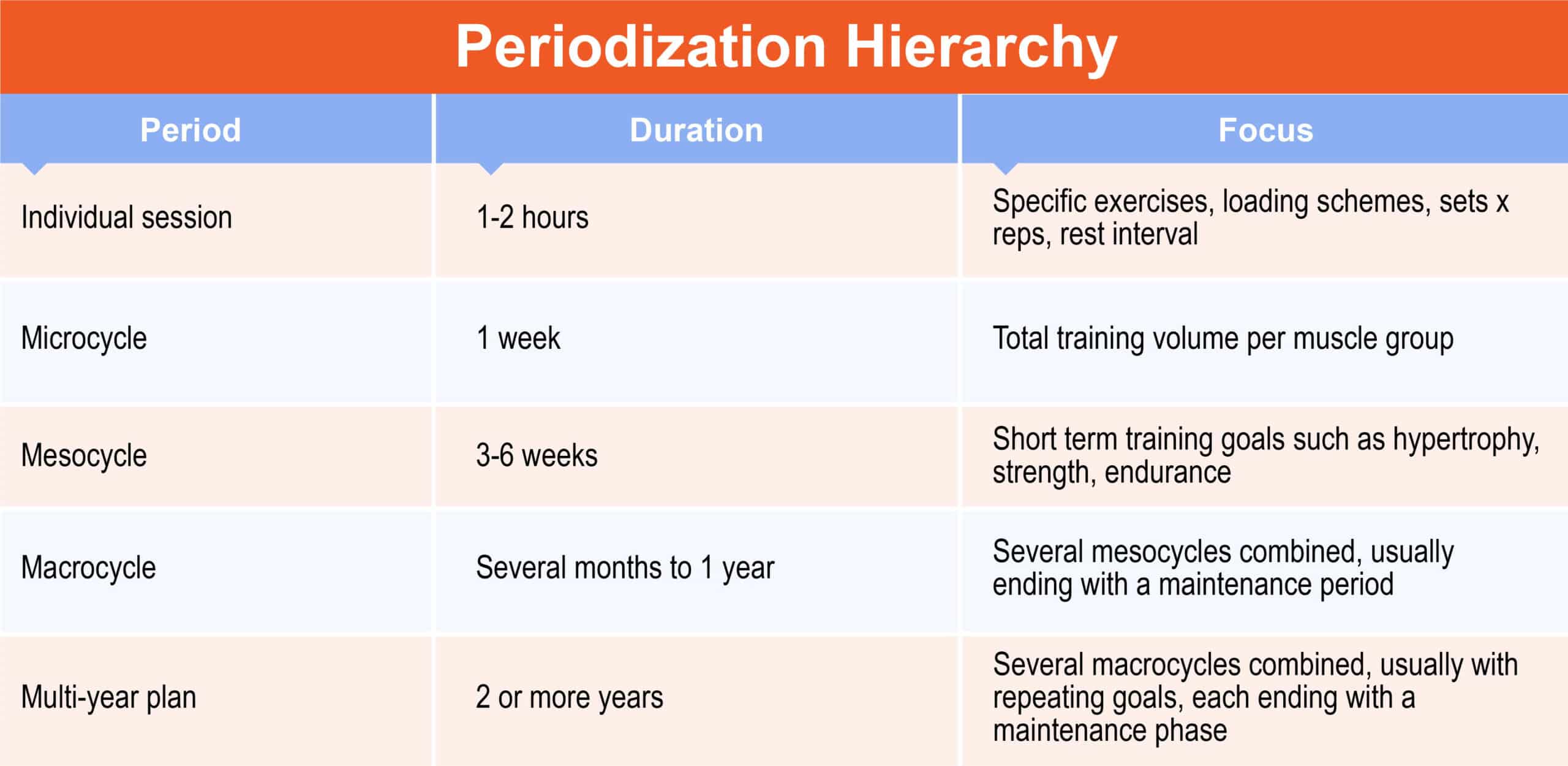
Another form of periodization is auto-regulated periodization which allows for individual sessions within a microcycle to vary based on client preparedness. Under this model, programming varies based on feedback from the client. A night of poor sleep or a sudden stressful event can be reasons to reduce training volume and/or intensity. On the other hand, if motivation is high and performance is better than expected, increasing volume or load can be warranted. In essence, the trainer must tailor the sessions’ plan and goals based on the client’s day to day abilities.
This method is vastly superior to forcing a pre-planned program irrespective of the client’s feedback, but note that it can get a bit messy in terms of quantifying progression and overall goals if the training is constantly shifting and the coach does not account for this when programming for the client.
Types of Periodization: Traditional vs. Undulating
Many textbooks and reference manuals title periodization strategies as “linear” and “nonlinear.” However, in the strictest sense, both are nonlinear in nature due to the varying levels of training volume throughout a mesocycle of training. Therefore, the terms traditional and undulating will be used, as they are more descriptive.
Traditional periodization strategies involve training with the same sets and repetitions per microcycle, with variations in load per training day, for example a hard, medium, and light day.
Each successive microcycle would increase either the load or volume or both, resulting in a mostly linear increase in total training volume over the course of the mesocycle. Consider the example below:
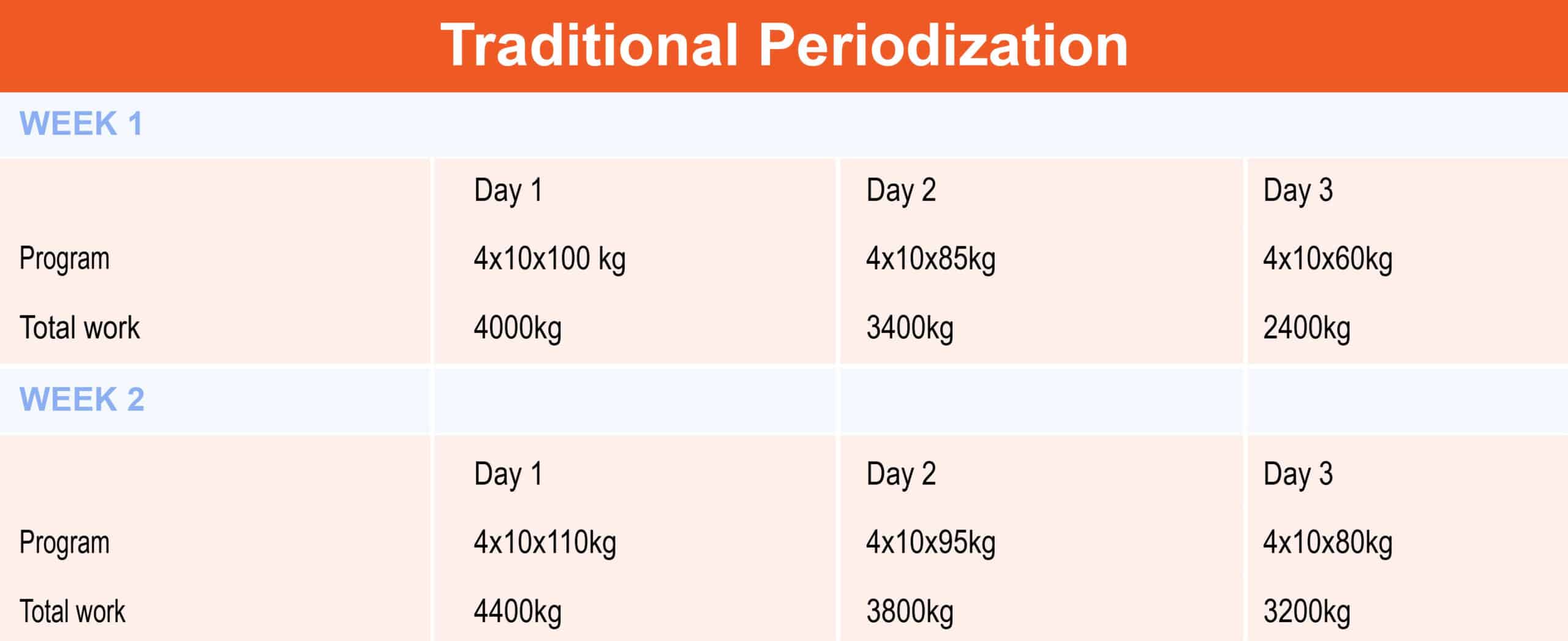
This would result in a work over time graph similar to the next chart below:
An important characteristic of traditional training is that, despite the weekly or session to session variation, the program still has one focus such as hypertrophy or strength, but not both. All training days within the microcycle are still focused on that goal.
Nonlinear or undulating periodization is similar in so far as there are variations within the microcycle. However, these variations are larger and focus on different goals. For example, one day or training session may focus on hypertrophy, the next day on strength, and so on. Since these goals have distinct programming guidelines, the sets, repetitions, and load ranges all may change on a session-to-session basis. The resulting changes in overall training volume are drastic. Consider the example below:
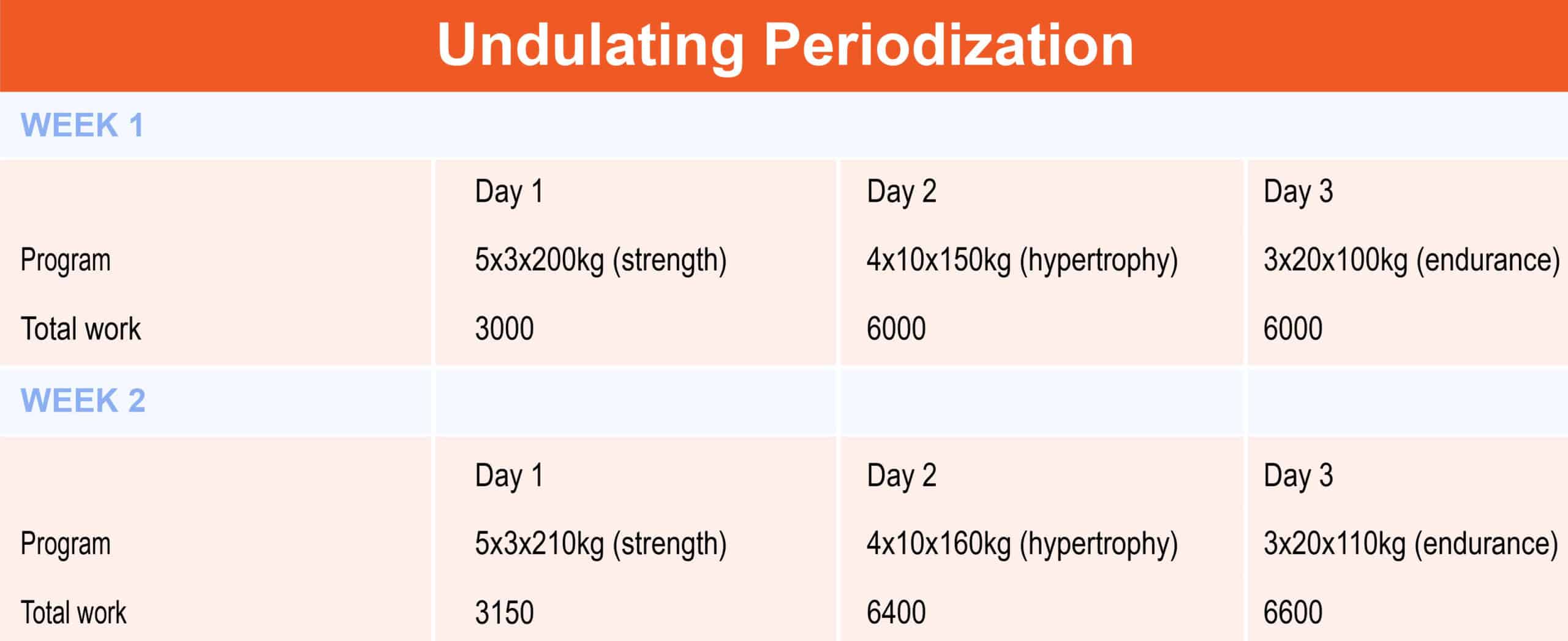
Programming Periodization for Fitness Clients
Programming a periodized training plan for fitness clients is, in many ways, more challenging than for athletes. Athletes have a clearly defined preseason, in season, and off season, which can simplify the process of setting goals and creating timelines.
General population personal training clients do not have such a rigid structure. However, that does not mean a long-term training plan is unnecessary. In fact, it is even more necessary and can serve as a goal setting exercise to increase client motivation and retention. There are a few guidelines to consider:
1. Limit consecutive mesocycles with identical goals to three or fewer.
Varying the training stimulus is a good thing.5 Training the same movements, at the same intensity, with the same goal for longer than three mesocycles (one training block) will likely lead to monotony and training staleness.
2. Follow a strength period with an endurance period.
Training for strength involves relatively high loads with lower training volumes. At the conclusion of a strength focused training block, the connective tissues have been stressed for several months and would benefit from a period of light loading to allow for recovery and adaptation. Endurance training, which involves relatively low loads, is ideally suited to allow for this recovery while continuing training.
3. Precede a strength period with a hypertrophy period.
As mentioned above, strength training requires relatively high loads, a hypertrophy training block serves to acclimate the muscles and connective tissues to moderate loading, making the transition to heavier loading smoother.
4. Following a strength period with a maintenance period is recommended
As mentioned, every two to three training blocks should be followed by a maintenance mesocycle. A logical placement for a maintenance mesocycle is after a strength block, when fatigue is high, soft tissues have been heavily taxed, and motivation for training may be low.
5. Fat loss phases can accompany endurance and hypertrophy periods, but not strength
Most personal training clients have fat loss goals, therefore it is the trainer’s job to combine nutritional and exercise strategies in a way that maximizes the effectiveness of both. The energy deficit required for fat loss will impact exercise performance, especially when training for strength.
Endurance and hypertrophy training will suffer the least from the caloric deficit and are better choices to program during a fat loss phase.
Example of Periodized Training Plan
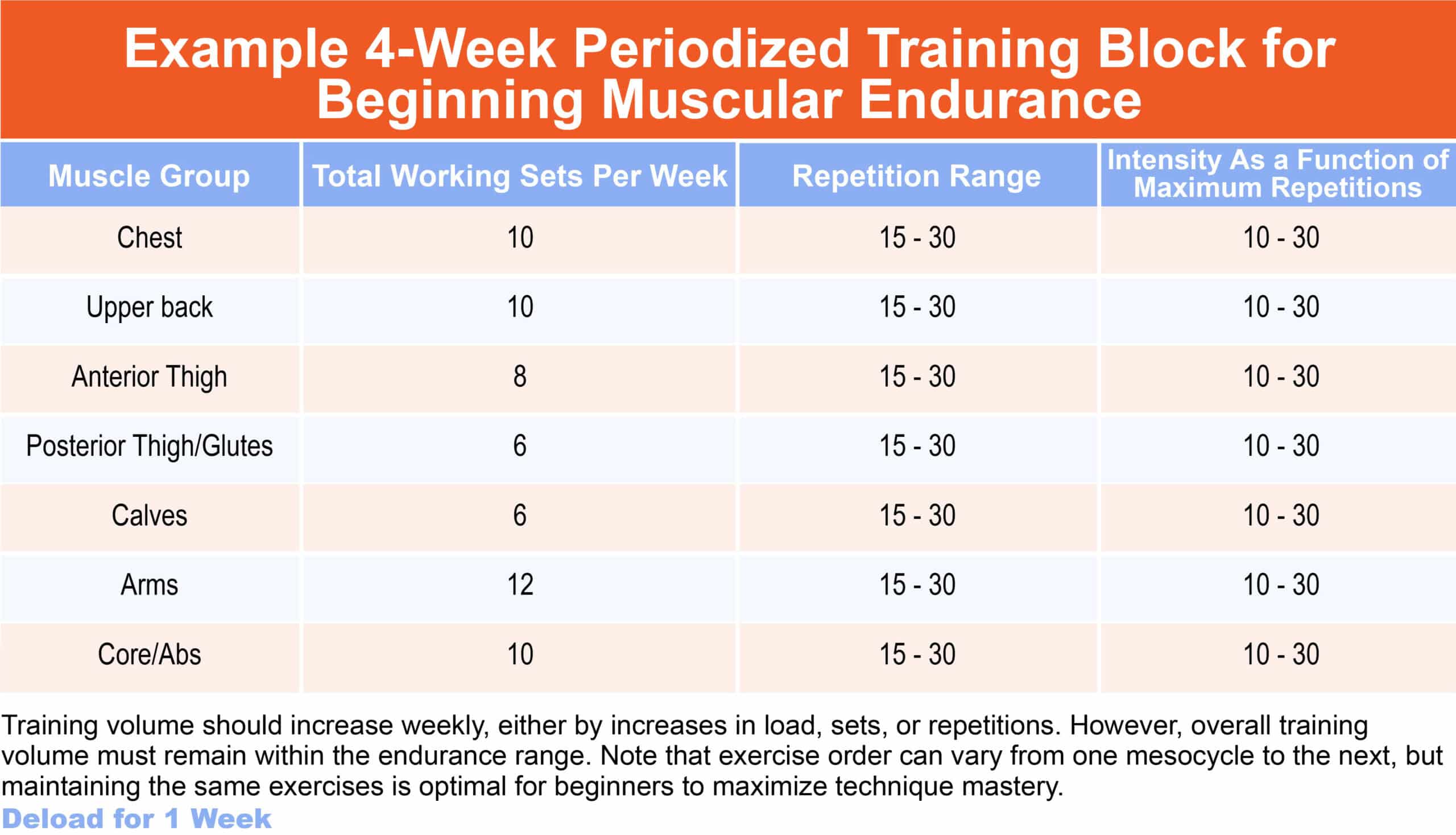
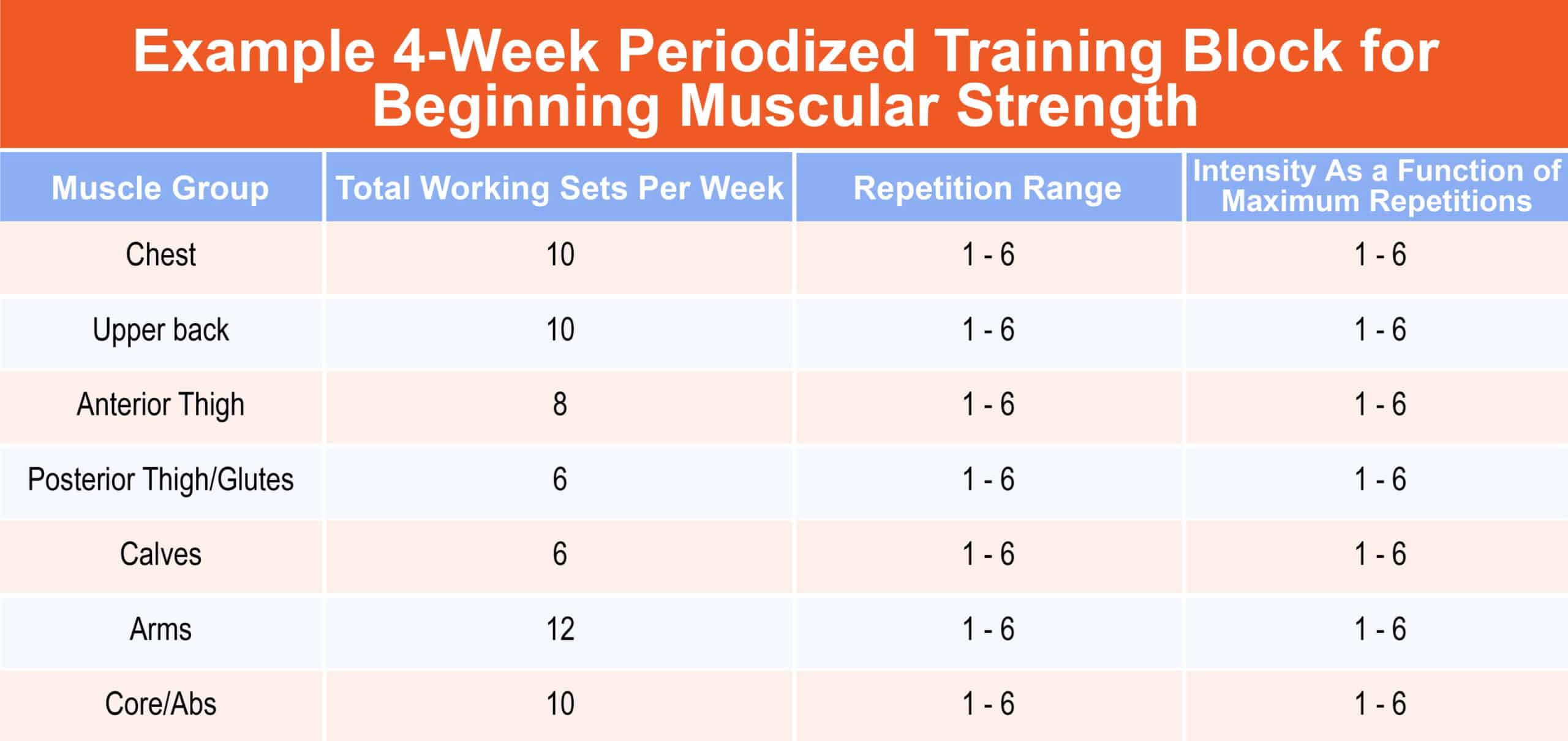
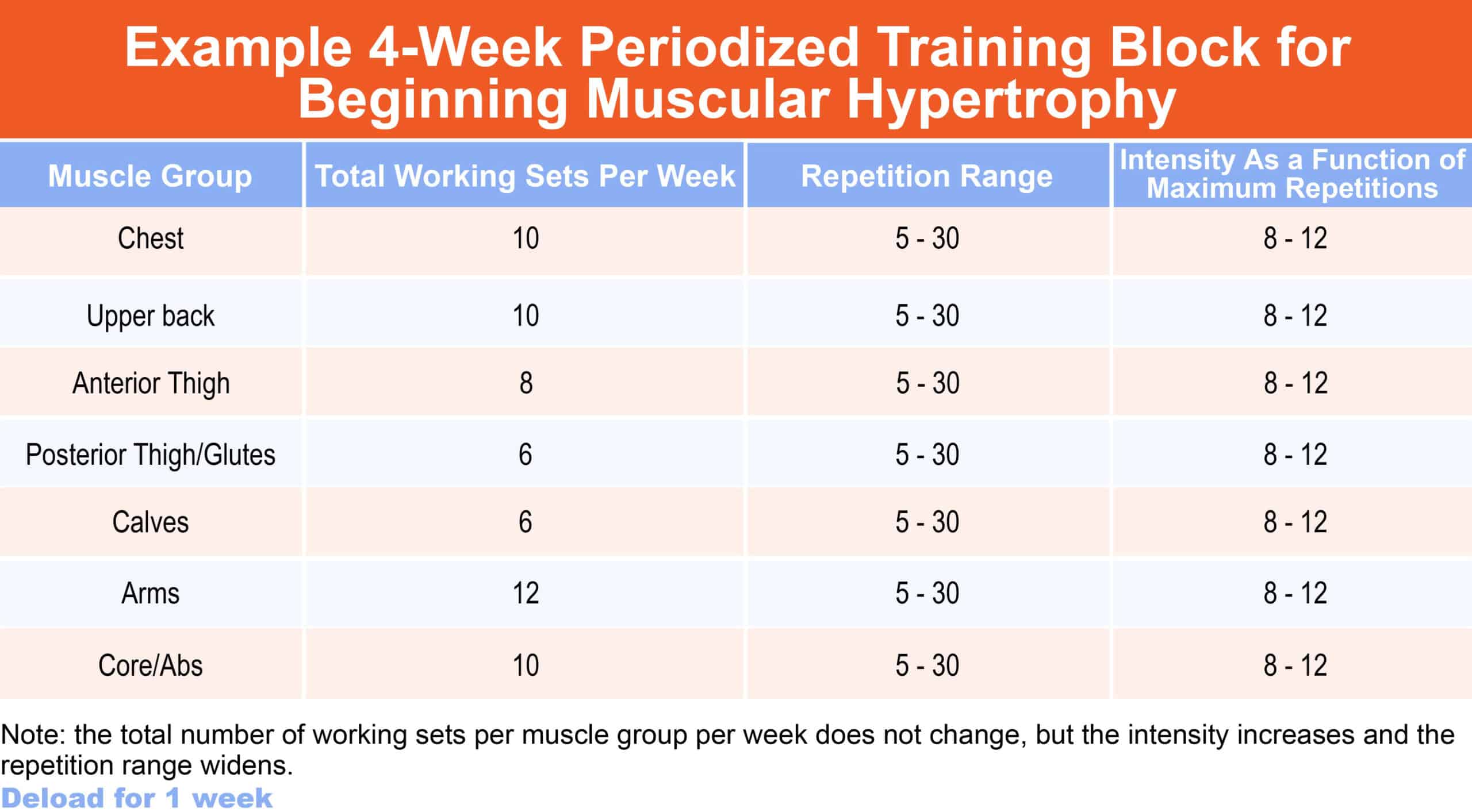
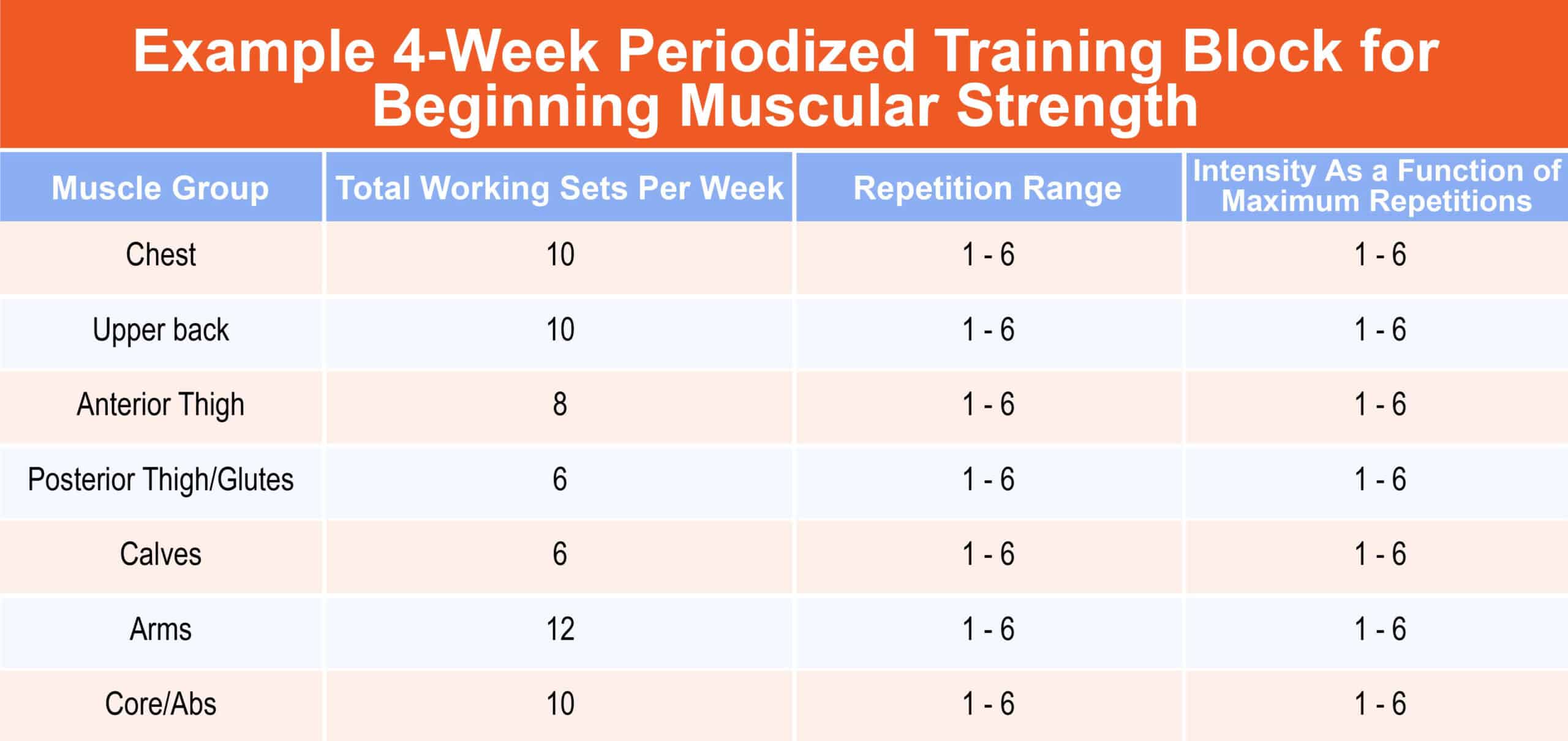
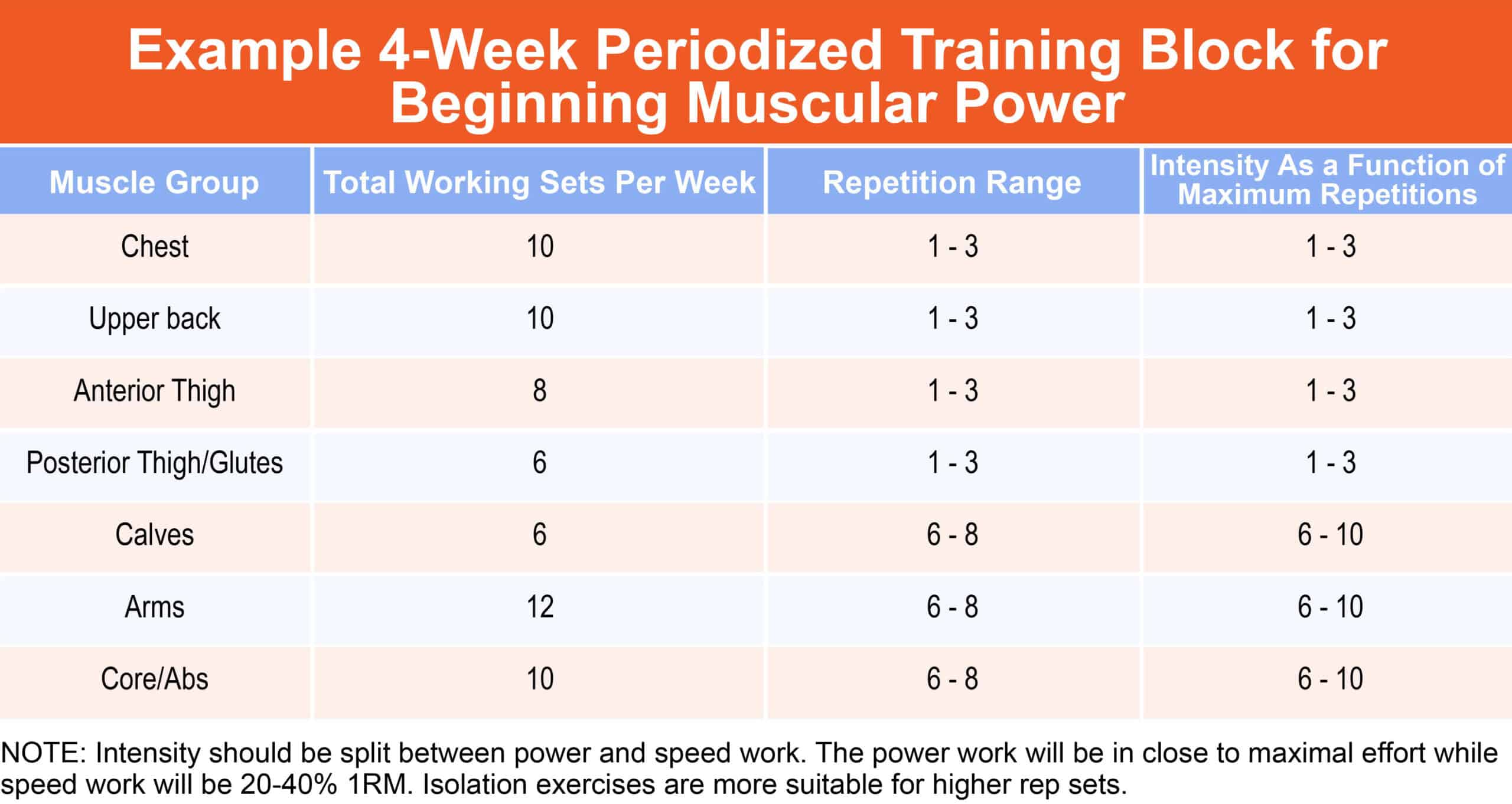
Summary
Proper periodization allows clients to progress towards long-term, larger fitness goals while remaining injury free. Knowledge of periodization is one of the key skills fitness professionals must develop to be successful, particularly when training individual clients for ambitious fitness goals.
References
- American College of Sports Medicine. (2009) Position stand. Progression models in resistance training for healthy adults. Medicine and Science in Sports and Exercise 41:687-708.
- Haff, G., & Triplett, N. (Eds) (2021) Essentials of Strength and Conditioning (4th ed) Human Kinetis, Champaign, IL
- Israetel, M., Hoffmann, J., Davis, M., & Feather, J. (2020) Scientific Principles of Hypertrophy Training. Renaissance Periodization.
- Plisk, S. & Stone, M. (2003). Periodization strategies. Strength and Conditioning Journal, 25(6) 19—37.
- Stone, MH, Stone, ME, and Sands, WA. (2007) Principles and Practice of Resistance Training. Champaign, IL: Human Kinetics, 376.
- Zatsiorsky, V., Kraemer, W., & Fry, A. (1995) Science and Practice of Strength Training. Human Kinetics, Chapaign, IL.












